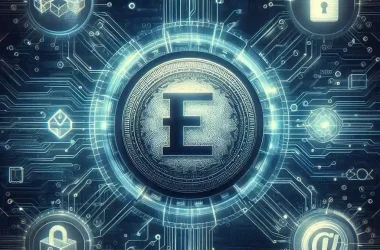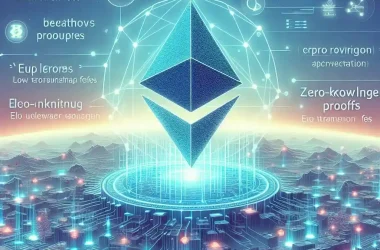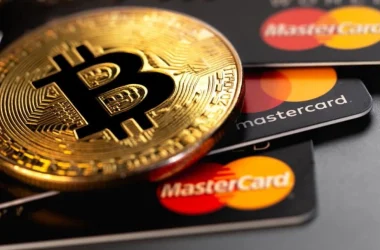As decentralized finance (DeFi) surpasses $100 billion in total value locked (TVL), it’s clear that this technology is no longer an experiment but a global movement. Once rooted in the Bitcoin White Paper, DeFi has evolved from niche projects to being a subject in Congressional hearings. Discussions about DeFi are now happening beyond the blockchain community, signaling its mainstream appeal and long-term potential. However, there’s still room for growth, especially in the U.S., where mass adoption can be encouraged through smart, targeted regulations.
DeFi’s Path to Widespread Adoption
Some may argue that the mass adoption of DeFi is unrealistic. In reality, DeFi has already moved beyond the experimental phase. It’s now a growing part of the financial ecosystem, with tokenization and new use cases expanding rapidly. Leading projects like Aave and MakerDAO are bridging the gap between DeFi and traditional finance. These initiatives make DeFi more accessible to institutions and everyday users, ensuring sustainability and trust.
DeFi’s growth is evident in its TVL, with platforms like Aave reaching billions in assets. Both developers and users are increasingly trusting these systems. Recent Congressional hearings show lawmakers are considering how to balance innovation with safety, further demonstrating that DeFi is gaining recognition at the highest levels.
Why DeFi is the Future of Finance
The question isn’t just whether DeFi can achieve mass adoption, but if it should. The answer is a resounding yes. DeFi addresses inefficiencies in the current financial system and can provide services to billions of unbanked or underbanked people worldwide. With only an internet connection, users can access global financial markets without needing banks. This fosters economic growth, especially in developing countries.
Projects like Compound, Uniswap, and Sushiswap are already filling these gaps. They offer decentralized solutions for lending, borrowing, and trading that reach underserved populations. DeFi also reduces fees and complexity, while increasing transparency. Open-source blockchains allow users to verify transactions, lowering the risk of fraud.
DeFi also offers new income opportunities through decentralized lending, staking, and yield farming. These innovations foster competition, leading to better financial services. Ultimately, DeFi is not just an alternative to traditional finance—it’s a necessity.
The Threat of Overregulation
Overregulation could stifle DeFi’s growth. Regulatory uncertainty, especially enforcement actions that don’t consider DeFi’s unique characteristics, can hinder innovation. High-profile actions have already shown how sweeping regulations can push platforms out of the U.S., slowing domestic industry growth.
For smaller projects, complex regulatory frameworks could be prohibitively expensive. This reduces competition, as only well-capitalized projects can afford compliance. Additionally, if countries adopt conflicting regulations, DeFi’s global interconnectedness could be compromised. A fragmented regulatory landscape would complicate cross-border transactions and limit DeFi’s appeal.
DeFi’s core principle—decentralization—could also be threatened by heavy-handed regulations. Strict Know Your Customer (KYC) and Anti-Money Laundering (AML) requirements could force platforms to adopt centralized features. This would alienate DeFi’s user base and reduce transparency and privacy.
Striking a Regulatory Balance for DeFi in the U.S.
The U.S. must avoid applying traditional financial regulations to DeFi without adjustments. Clear guidelines that reflect DeFi’s decentralized nature are crucial. These guidelines will provide legal certainty, allowing projects to innovate without fear of sudden enforcement actions.
Involving DeFi stakeholders in the rule-making process is essential. Initiatives like The Blockchain Association foster collaboration between regulators and the DeFi community. This ensures that regulations address the unique challenges of decentralized systems.
Regulations should also encourage growth, particularly for smaller projects. A “light-touch” approach, similar to the early internet era, would stimulate innovation. Regulatory sandboxes, where projects can operate with fewer restrictions, would allow developers to experiment while ensuring consumer safety.
Moreover, DeFi platforms should prioritize consumer protection. This includes offering clear information about risks and conducting regular security audits. Security measures can reduce fraud and hacking risks.
The European Union’s Markets in Crypto-Assets (MiCA) regulation serves as a useful example. MiCA provides clear definitions and guidelines for crypto-assets, helping DeFi projects in the EU operate confidently and innovate efficiently.
The Crossroads of Innovation and Regulation
DeFi presents an opportunity to enhance the U.S. financial system while minimizing consumer protection issues. However, excessive regulation could undermine its potential. The next few years will be critical in determining how the government responds to DeFi’s growth and shapes its future.
The post Is DeFi ready for mass adoption, or will regulation slow it down? appeared first on CryptoSlate.















